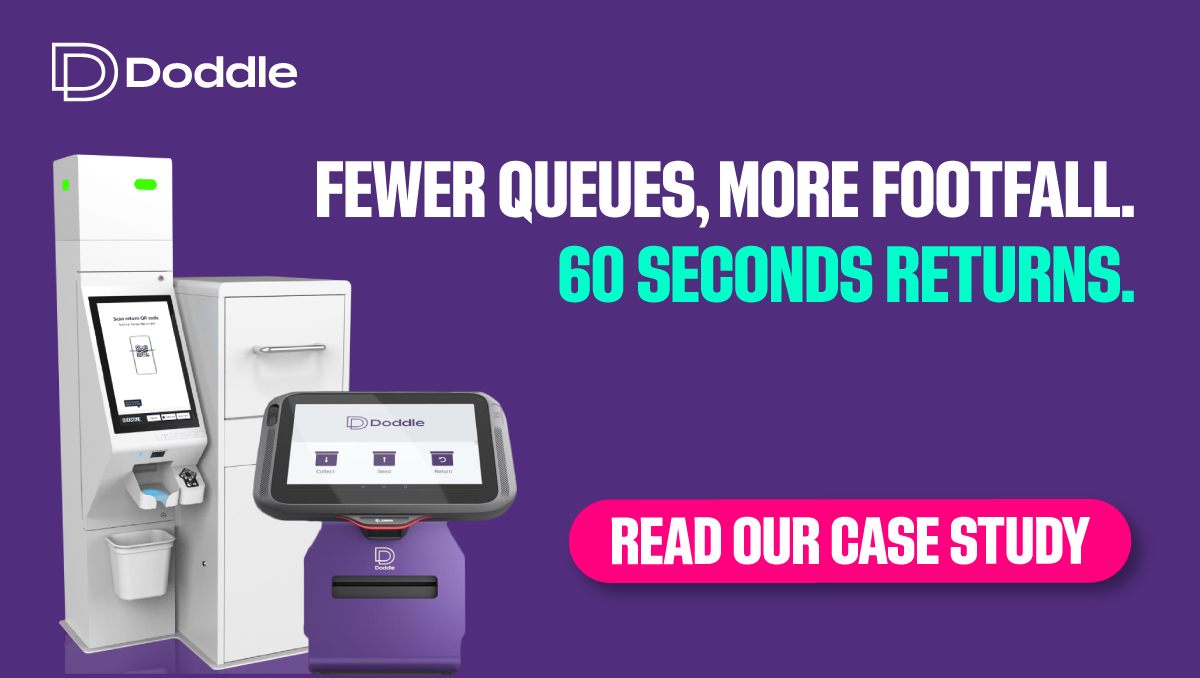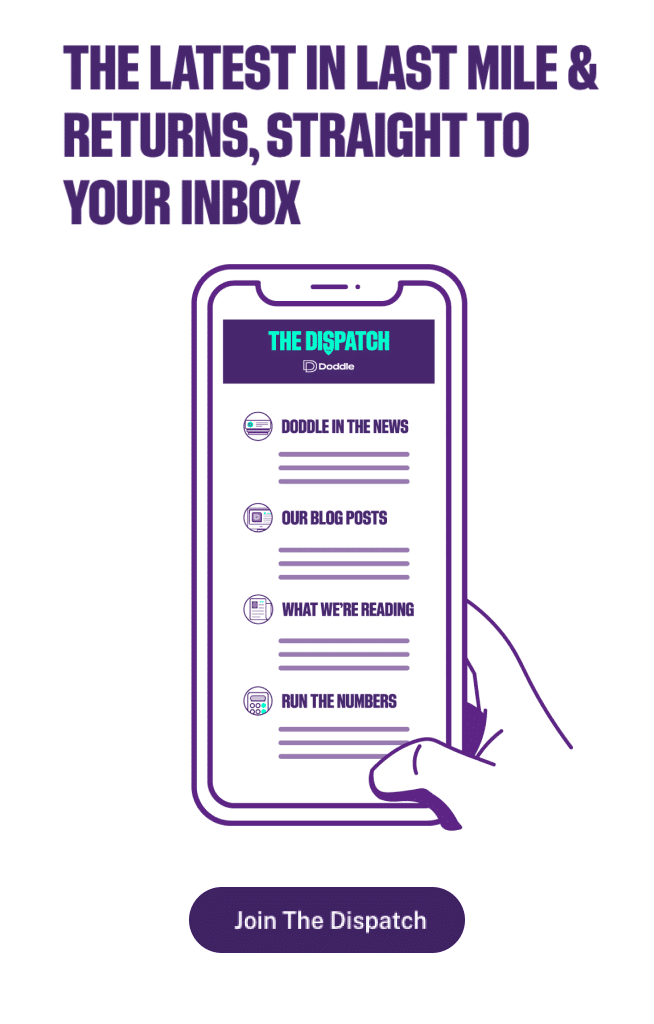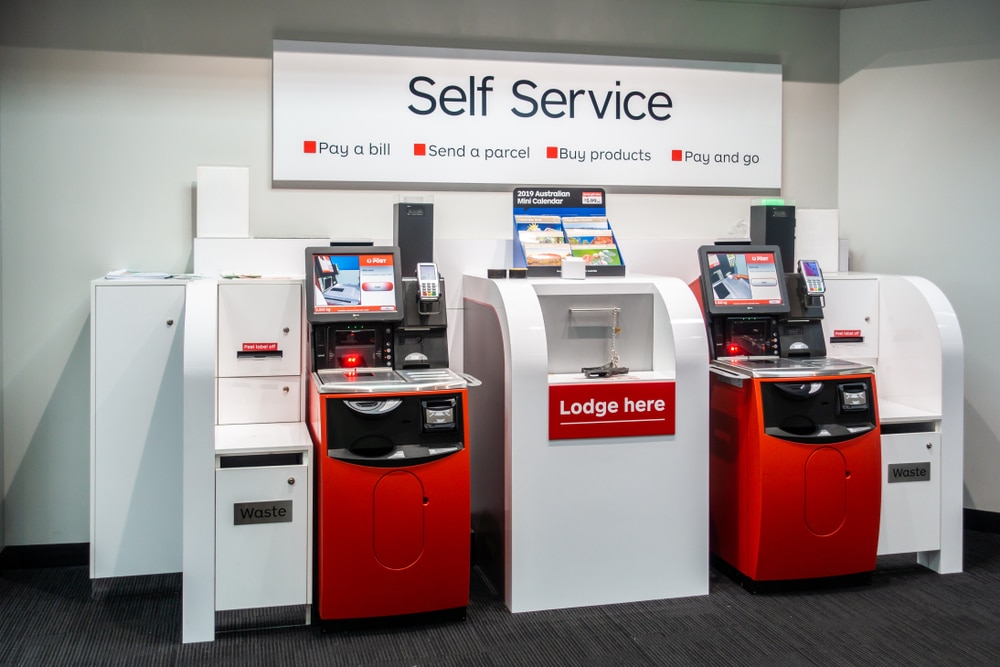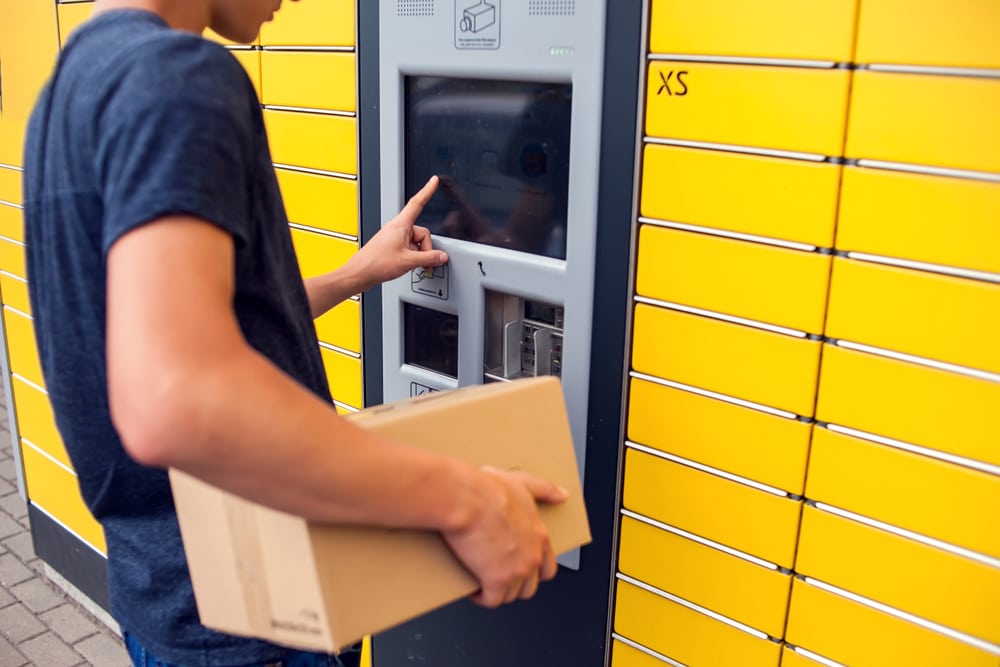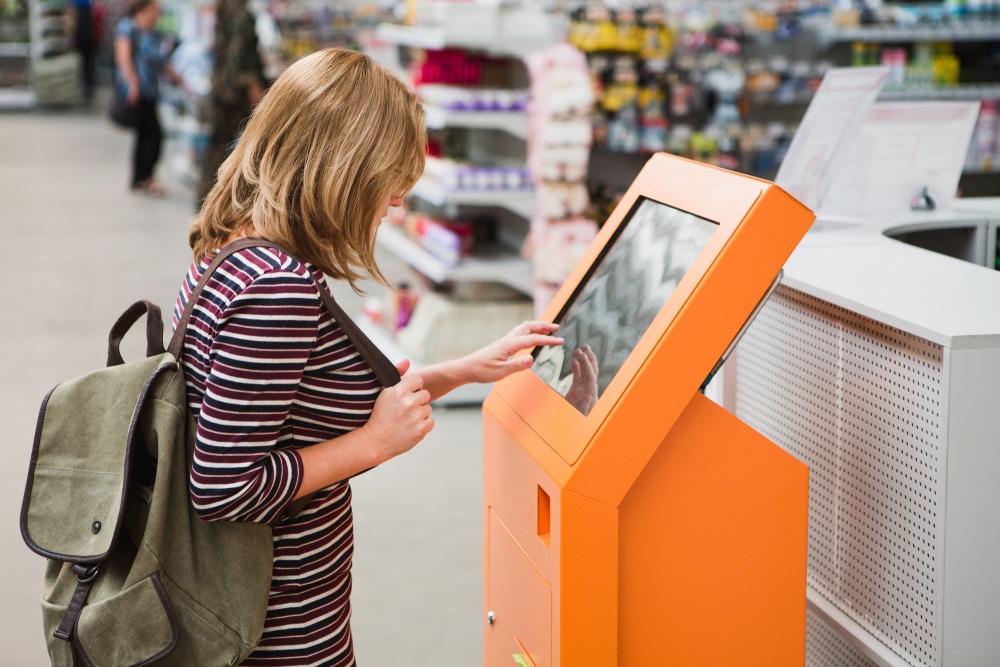Insight / Blog
What are the different types of self-service parcel kiosks?

Summary: We explore the different types of self-service kiosk, outlining the pros, cons and best use cases for each.
Self-service kiosks allow shoppers to drop off parcels, whether they’re making an ecommerce return or sending a package somewhere. Automating this drop-off stage of the consumer journey offers a better customer experience and reduces the need for stores, post offices and parcel shops to dedicate members of staff to this task, as customers can complete parcel drop-offs independently. That also helps to reduce long counter queues, as customers with returns or parcels to send can go straight to a kiosk.
With a wide range of sizes and models of self-service kiosks on offer, parcel kiosks can be suited to various locations where traditional pick-up and drop-off (PUDO) operations might not have previously worked. This provides a great opportunity for carriers and posts to expand networks, all while increasing parcel consolidation and thus reducing the cost of shipping packages.
It’s easy to see why self-service parcel kiosks are an attractive investment for carriers and posts. However, care must be taken in selecting the right type of self-service kiosk solution for each location type. That’s why we’re here to explore the different types of self-service kiosk, outlining the pros, cons and best use cases for each type.
What are the different types of self-service kiosk?
Self-service parcel kiosks are kiosks that allow customers to drop off parcels. There are different ways that this can be approached, which we’ve broken down into 5 key types:
-
Dropbox
-
Drop-Off Kiosk
-
POS (Point of Sale) Kiosk
-
Through-The-Wall Kiosk
-
Counter-Top Kiosk
Dropbox
On the most basic level, self-service parcel kiosks allow consumers a place to physically drop-off their parcels without having to queue at the counter. The most basic form of kiosk is the Dropbox – which can take the form of a simple cardboard box, although other versions with metal boxes or cabinets exist too. Featured in stores like John Lewis in the UK, or Love Bonito in Singapore, consumers place their pre-packed and pre-registered parcels inside the box.

Although this solution is simple and cost-effective to implement, it does have several weaknesses. Firstly, consumers must print their own labels beforehand and pre-register their returns – meaning that the solution doesn’t cater for all consumers.
Secondly, there’s no digital process involved. The consumer doesn’t get a receipt or proof that the parcel has been placed in the kiosk, and the retailer doesn’t know a return has been accepted until they are manually processed by staff. There’s also no way to alert staff if the box is full, thus requiring physical checks by staff.
In addition, a cardboard box isn’t secure. Some consumers might not feel comfortable using a solution where their parcel could be easily taken, especially with no receipt or evidence that they dropped the parcel off in the first place.
This solution might be better than nothing, but it’s far from ideal.
Drop-Off Kiosks
Drop-Off Kiosks are the advanced and secure upgrade to the Dropbox, featuring additional features like screens and printers, offering consumers a way to process returns and print labels as well as a physical space to place their parcels.
For example, the Doddle Drop-Off Kiosk is designed with a secure integrated lockbox, which prevents people from being able to reach inside and take parcels out. It also has a status light attached, which alerts staff when the box is full and needs emptying for more efficient staff processing. With a screen and printer (and optional drop bags), consumers can process their drop off, print a label and drop their parcels off in as little as 60 seconds and receive a confirmation email immediately afterwards for peace of mind.
Our kiosks have now processed over 10 million returns and have saved staff approximately 7 years manually processing returns. Find out more of our key results in our case study.
POS kiosk
A POS (Point of Sale) Kiosk is a kiosk that combines parcel drop-off with a range of other purchasing solutions, such as the ability to pay for postage, or to check out other items like envelopes and stamps. They’re the most complex type of self-service kiosk, taking a lot of engineering to get right, and increased cost to implement.
A benefit to POS Kiosks is that they become a great draw to improve the overall consumer experience in post office branches and can attract more micro-shippers and C2C customers who don’t have prepaid labels for their sends.
Usually implemented by posts, there are different ways that POS Kiosks can be implemented. In the UK, the Post Office’s self-service kiosk handles domestic and international mail & parcel sends as well as self-checkout services so consumers can purchase Post Office products at the same time – becoming a way for consumers to bypass counters for nearly all services.
However, the more options on offer, the longer and more confusing the journey becomes for consumers. Compared to Drop-Off Kiosk models, which take as little as 60 seconds, POS Kiosks take around 2-3 minutes to complete the journey. This can negatively impact consumer satisfaction and create scenarios where separate counter and self-service queues are formed.
POS Kiosks are bigger than Drop-Off Kiosks, so they aren’t suitable for every location. The Post Office is a great example here, as the POS kiosks are deployed in approximately 220 of its 11,500 locations – that’s less than 2%. In addition, they also require more staff interaction, including physical handover of parcels, refilling empty resources and assisting customers through the different options available.
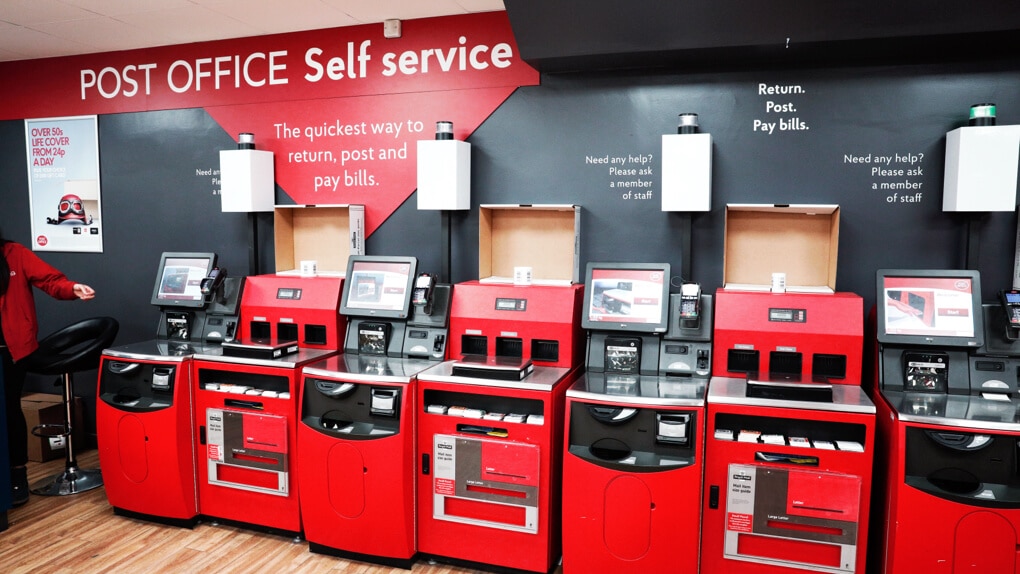
Austrian Post has taken a different approach with self-service POS kiosks, rolled out in its branches and partner locations. Its self-service ‘Shipping Station’ kiosk is equipped with a payment terminal, scales and a printer for consumers to weigh packages and purchase the correct shipment rate. Rather than doing everything in one kiosk, focusing its POS Kiosk on parcel sends reduces the complexity of the journey, making for faster transaction times and higher customer satisfaction.
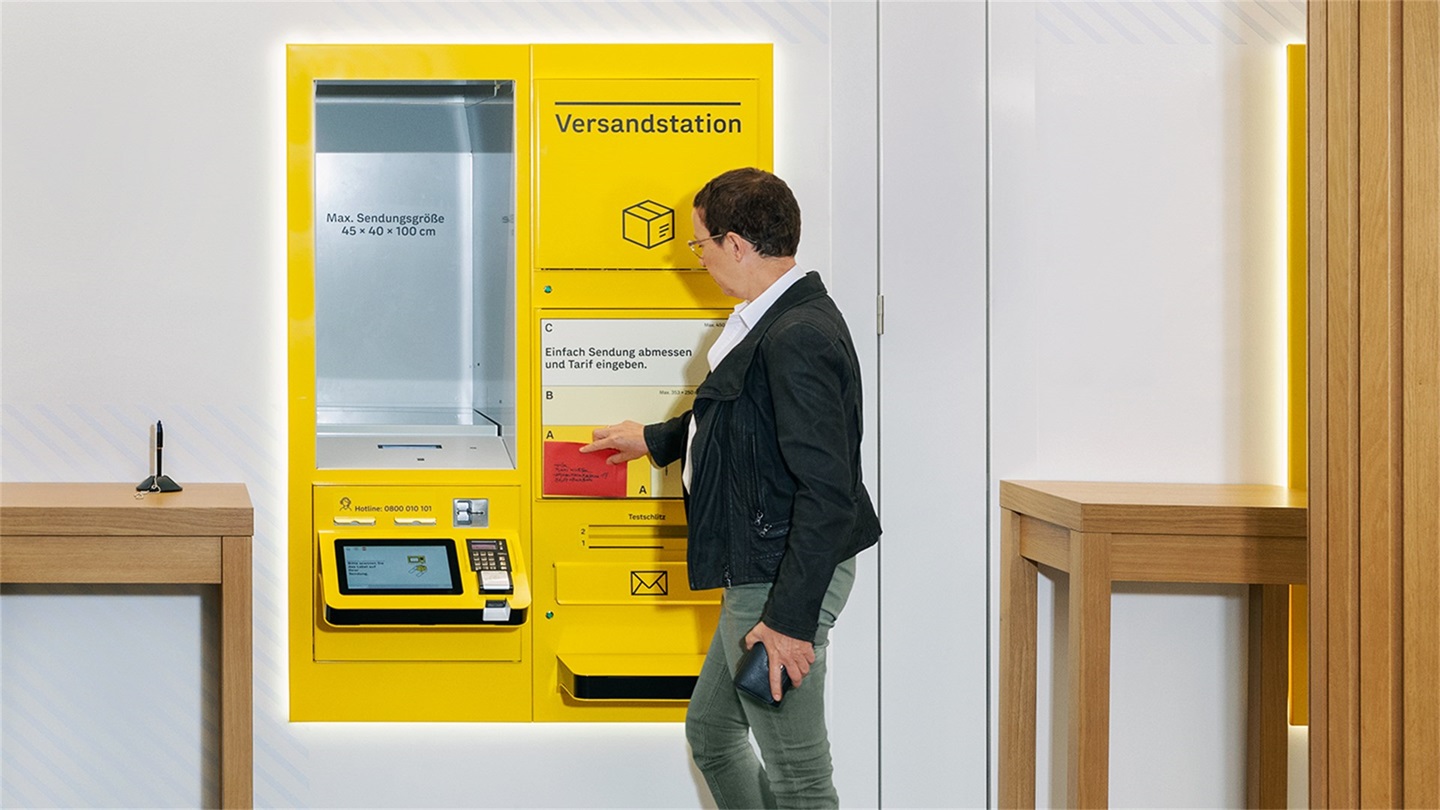
Through-The-Wall Kiosk
Through-The-Wall Kiosks are self-service kiosks built into a wall. This means that the touchscreen and consumer interaction will happen on one side of the wall, while parcels are dropped through a hatch to the other side where they are then processed by staff. Generally speaking, there are two variations of the Through-The-Wall Kiosk: manned, and unmanned.
Manned kiosks have staff ready and waiting behind the wall, ready to accept and move parcels as soon as they come in. Unmanned kiosks have a container behind the wall, so parcels will be dropped into a container and emptied and processed by staff once full. Through-The-Wall Kiosks also enable the use of larger containers (and thus have to be emptied less often), while its placement behind the wall means that staff can swap and empty container bins without disrupting the kiosk. There’s no need to open the lockbox, empty and replenish bins in sight of consumers – it can be quickly wheeled out and replaced behind the scenes.
Another benefit of Through-The-Wall Kosks is the high security it offers. With parcels dropped into a different locked room, they are nearly impossible for customers to access. This can also save space as it’s physically built into the wall, and the drop-box isn’t used on the store side.
In addition, Through-The-Wall Kiosks can also open up out-of-hours drop-offs if built into an external wall. This gives consumers greater flexibility and convenience, improving satisfaction.
However, Through-The-Wall kiosks rely on infrastructure. They aren’t a ‘plug-and-play’ model and must be built into a wall to be installed, creating greater implementation costs and considerations.

Counter-Top Kiosk
The fifth and final type of self-service parcel kiosk is the Counter-Top Kiosk. This is a lightweight and portable version of the Drop-Off Kiosk. Fundamentally, Counter-Top Kiosks are small screens and printers which allow consumers to process drop-offs and print labels, providing the same experience as Drop-Off Kiosks in a fraction of the space.
Counter-Top Kiosks can be integrated with a drop box or used to speed up behind-the-counter transactions. Their size make them incredibly flexible solutions that can be adapted to suit whatever location they are in. They also require next to no installation time, able to plug in and go.
Because of their size, Counter-Top Kiosks open up a range of location options that wouldn’t be able to accommodate other kiosk types, making it an excellent option for carriers and posts looking to expand their network.
At Doddle, we’ve used our research from over 10 million returns through the Drop-Off Kiosks to make the Counter-Top Kiosk as streamlined as possible. As a result, our Counter-Top Kiosk can process drop-offs in as little as 30 seconds. Find out more about the Counter-Top Kiosk in our free product brochure.

Should carriers and posts build or buy self-service kiosks?
Self-service kiosks are an attractive investment for carriers and posts, able to improve the consumer journey, reduce staff dependencies and provide network growth opportunities. But should logistics providers invest in developing solutions in-house, or work with external partners?
Developing solutions in-house gives carriers and posts complete control over the kiosk solution, allowing them to build to their exact needs and spaces. It also provides an opportunity to build something different than anything else on the market, strengthening their position. However, building self-service kiosk solutions in-house is time-consuming and expensive, with months or years of development needed to produce an MVP.
Meanwhile, while creating the first version of a solution, competitors could already be achieving results with more developed technology. Buying a self-service kiosk solution enables carriers and posts to roll out a tried and tested self-service parcel kiosk solution within weeks.
In the long-term, buying a solution can also be incredibly cost-effective as it saves on the upfront development costs, reduces ongoing maintenance costs, and frees up months of team resources required to build internally. Those resources can then be reallocated to other business areas for greater strategic growth.
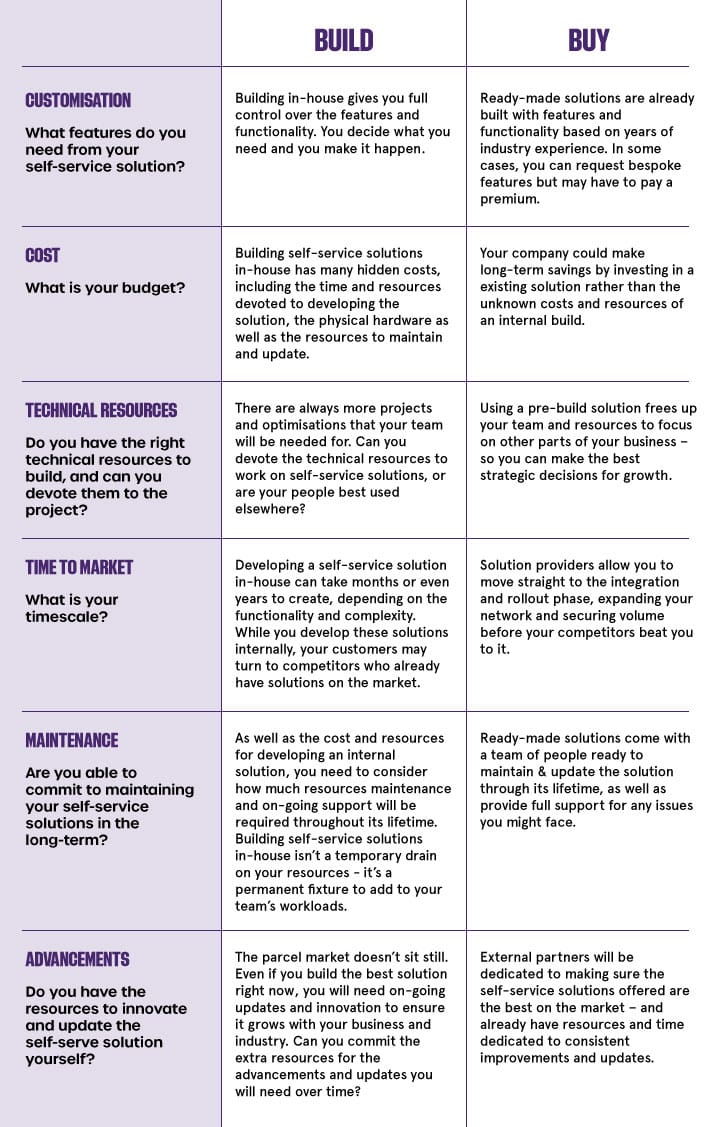
Over 10 million parcels through our self-service kiosks – and counting
Working with some of the leading businesses across the globe, our Doddle kiosks have achieved some amazing KPIs including:
-
Over 100 transactions per day per kiosk on average
-
Proven ability to handle 400+ transactions daily
-
7 years worth of staff time saved compared to manually processing returns
-
+80 Net Promoter Score
To find out more about our kiosk solutions, including our Drop-Off Kiosk and Counter-Top Kiosk variations, download our free product brochure.

Related articles
7 tactics to drive self-service parcel drop-off adoption
Focusing on parcel kiosks, we explore 7 tactics to encourage customer adoption and drive volume into out-of-home (OOH) delivery networks.
What consumers think about parcel lockers and how carriers can encourage adoption
Parcel lockers offer carriers automation, consolidation and increased efficiency. But what do consumers really think about them?
Should carriers and posts “DIY” their self-service solutions?
Carriers and posts should invest in self-service solutions. But is building in-house the best option?








